Cardi B's “WAP" may have ruled the airwaves for the last few months, but that hasn't stopped a massive scene of technically advanced, guitar-centric rock from “quietly" enjoying astounding worldwide popularity, too. And Aaron Marshall, the mastermind behind prog heavyweights Intervals, is among those at its forefront. But keeping a band and the genre—which also includes Animals As Leaders, Covet, Polyphia, Chon, and other bands—moving forward is a full-time job. So, in the online-music era, artists have to adapt and become as proficient at business and production as they are at their instruments.
Marshall is a template for this breed of renaissance musician. He is a business owner, composer, producer, and a social-media marketing guru, and he releases his own music without a record label. Plus, he's a mind-blowing guitarist. Even during COVID-related lockdowns and unrest, these skills keep Marshall, his band, and his business busy. While some bands are hunkering down and waiting it out, Intervals is pushing forward with its just-released album, Circadian.
“We decided to move full steam ahead," Marshall says. “Give [the fans] some new music, and we'll see how things progress from there. We're glad we can provide for fans of the music, and we feel that we made the right choice."
This commitment to both fan base and craft is why Intervals has risen to the cream of the boundary-expanding prog-guitar crop in the nine years since Marshall formed the Toronto-based band. It's also evident in the compositional and fretboard theatrics found throughout Circadian's 35 minutes.
To make the album, Marshall and producer Sam Guaiana locked themselves away, exploring and expanding Intervals' trademark rhythmic complexity and harmonic interplay. Factor Guaiana's pop production techniques in with Marshall's low-tuned, aggressive riffing on songs like “Vantablack" and “String Theory," and Circadian takes the band to a very different place than earlier albums.
Also, fleet-fingered guests Marco Sfogli (of Dream Theater singer James LaBrie's band) and Joshua De La Victoria elevate a couple of Marshall's compositions beyond what he thought was possible. You'll even find an inspiring saxophone solo on “D.O.S.E.," as well as the powerhouse rhythms of bandmembers Josh Umansky on bass and drummer Nathan Bulla. Yet even with all of these ingredients, Circadian never comes off as disjointed. According to Marshall, that's because it's all about “this constant striving for balance. It's things that I'm passionate about, conveyed through the music."
Over the last three albums, Intervals has developed a signature sound that's soaring, majestic, and full of rich dynamics, tempo changes, and varied instrumental colors. How do you balance all that while still growing as an artist?
I try to write based on intuition. With each body of work, I'm a different person. I'm always into new things. Perhaps my pencil would be a little sharper if I was constantly composing. But I've never had the luxury. Since the beginning of this journey, it's been a freight train. There's always been deadlines and things.That's what's pretty exciting about right now, honestly: the fact that I have time to compose. I've got the bug to continue writing, and I'm feeling really good about it.
Circadian has some heavier moments. Did you set out to bring more metal to this album?
I did, actually. I'm dipping a toe on taking Intervals back in that direction. I wanted to bring the 7-string back a little bit. One of the 7-string songs is in drop A, and then there's another, “String Theory," that's drop D with a low A. But I didn't want to go, “Okay. Here's a fucking full-tilt 7-string record." I still had things I wanted to say with 6-string. But I think it's a sign of things to come. Part of me is eyeing an 8-string and going, “Maybe that's going to be a vibe at some point." Who knows?
How else did Circadian help you grow?
I'm continuing to grow as a composer, in terms of my attention to detail and arrangement. I'm exploring new production tricks, new ways that we can utilize the guitar. Something I love about vocal production is wide, stereo background vocals. And Sam, the producer and engineer that I worked with, primarily works in the pop-punk world. So he was good at applying those vocal techniques [to guitars]. That's something I'm really, really excited about.Also, we doubled all my guitar harmonies—even if it was a third above, a third below, octaves, or a combination of those. Then we could say, “I want this to have that stereo background vocal vibe." We could pan them harder away from each other, maybe even compress them more, or do something like adding some chorus. It's painstaking—we would have to really scrutinize takes to get them really tight with each other. But I'm excited about what we achieved.
The collaborations with Marco Sfogli and Joshua De La Victoria are impressive.
I'm in love with Josh's project called Victoria, which has Matt Garstka, the drummer from Animals As Leaders. He's like 22 or 23. It's kind of scary, he's so good, and I really love providing a platform to show him off. I was sending him bounces and asked what he thought. Usually, a [guest-artist] feature is within the context of the solo section. But we tossed some ideas back and forth, and I was like, “Oh, this is money." That's why that song ended up being called “Lock & Key." It's synergistic. One [player's part] completes the other.
As far as Marco on “String Theory," he is probably my favorite guitar player of all time. I've been stealing his approach to melodic, top-line guitar for years. I had a solo spot open up, and I figured I'd shoot my shot. He got back to me and said that he'd be really excited to do it, and 48 hours later I had a completely finished solo in my inbox. I was like, “Dude, are you kidding me?!" I completely lost my shit. I told my parents because they know how much of a fan I am. I was telling everybody I know! The part has my jaw on the floor every time I hear it.
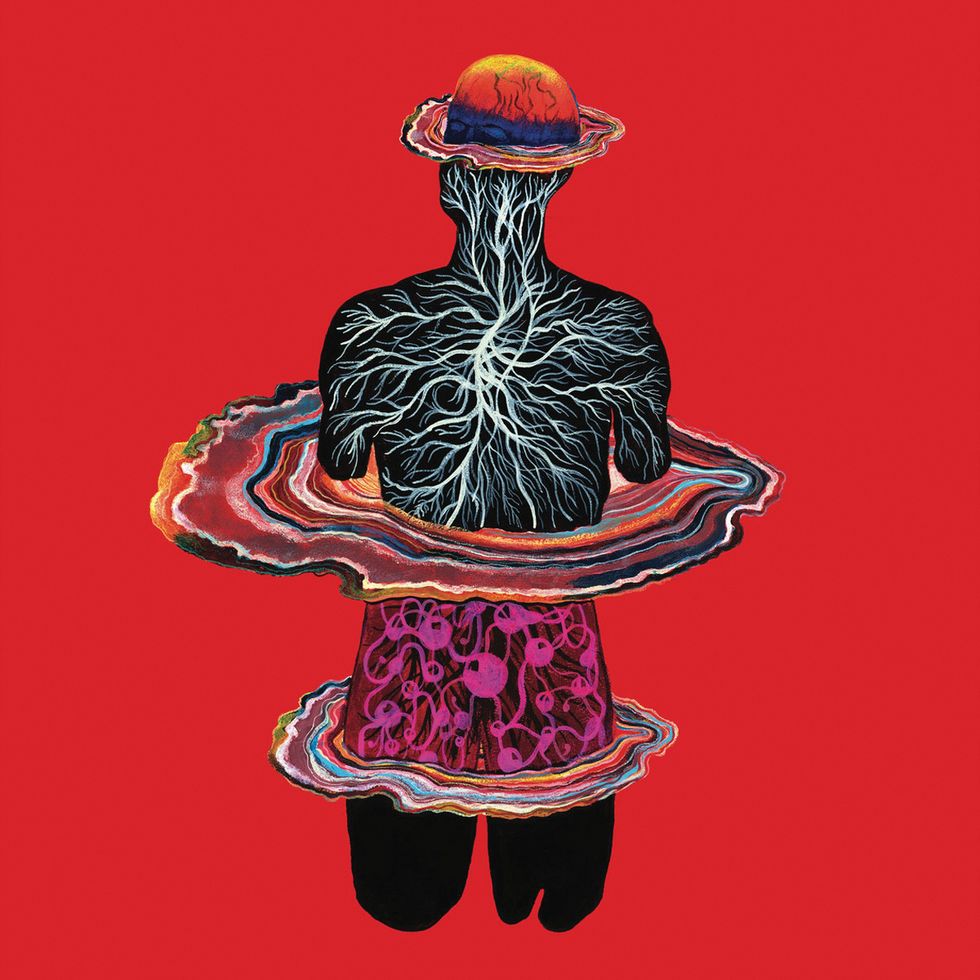
Despite being recorded during the pandemic, tracking for the new album “didn't feel too far from what I'm used to," says Marshall. It's “largely dependent on guitars. So we don't usually have anyone else around anyway."
During 2015's The Shape of Color, you were with PRS. With The Way Forward, in 2017, you played a lot of Suhr and Aristides guitars. Now, you're using Mayones. What inspired these changes?
Really, at the end of the day, it's about listening to my intuition. And it's about exploring and finding what speaks to me, what works, and feeling that I'm in the correct company.It's never about being unhappy with the guitars. It also has nothing to do with the end goal of slapping my name on an instrument. Sometimes people think that can be the case, but I can assure you it's not.The Mayones guys have always been very kind to me. The opportunity was there to spend some time in Gdańsk, at their shop in Poland, and check everything out. I had a blast. I was very impressed by the guitars and the operation.Then they sent some instruments to try to see if they suit my tastes. Those first two Mayones Regius Core models are amazing—they're absolutely phenomenal, road-worthy instruments. They sound great, and they're all over the record. Those are the guitars that I showed on our Rig Rundown with you guys. That was my first tour with them. Now we're playing around with some ideas and experimenting with stuff. People like to take guesses at what those things are, because they see guitars and they go, “Oh, this must be it" ... “That must be it." I can assure everybody that I'm going to throw a curveball with what we're working on. I'm really excited about it.
So there's going to be an Aaron Marshall signature Mayones guitar?
Well, I'm being very cryptic. But we are working on an instrument that doesn't exist in the catalog. It has specs that are extremely particular to me. If that's not being explicit, then I don't know what is [laughs].
What other guitars did you play on the album?
I used a Martin that was borrowed from a good buddy, Rob Cappelletto. He's faculty at York University (in Toronto), for the jazz program. He's also my tech, a guru, and somebody that I really look up to. I can't remember exactly what model it was.The meat-and-potatoes 6-strings were my Tele and the jade-green Regius Core from Mayones with Bare Knuckle Silos. We also used my gunmetal Suhr Custom Modern with the roasted neck, the reversed headstock, and a Floyd for some overdubs. The 7-string stuff is probably equal parts my Abasi J Larada 7, with a wenge neck, and my Regius Core 7 from Mayones. It's the purple one with the ash body. That one has Silos in it, as well. We really liked how that guitar sounds, because it has a Schaller Hannes bridge on it, which is a very particular sound.
Be sure to watch our in-depth Rig Rundown with Intervals:
Intervals leader Aaron Marshall plays 6- and 7-string Mayones Regius Core guitars with Bare Knuckle Silo pickups, and is currently collaborating with the Polish company on a signature model. Photo by Mike DeMellia
You've been a big proponent of amp modeling, but the studio can be very different. Do you use live amps and pedals while recording?
Actually, funny enough, I'm pacing around my studio right now, staring at a wall of amps and pedals. But no analog equipment was harmed in the making of this record. The album is 100 percent Neural DSP plug-ins. Isn't that terrifying? It's terrifying.It's the Fortin Cali Suite plug-in on all of the rhythms. It's amp three from the Archetype: Nolly on the majority of leads. Some stylized cleans are from Archetype: Abasi. And we used the 800-type amp two from Archetype: Nolly for some split-coil pushed mid-gain type vibes and textural-type things.
The even crazier part was that every single tone that made it into the mix was the exact tone that we dialed in to track with. I literally sat there with a cable plugged into a Radial DI that went into some sort of outboard compressor scenario. The bass was probably 90 percent Parallax, maybe a little bit of the Darkglass plug-in at times. That's it. Funny enough, while all of the guitars are completely digital, there is zero sample replacement or reinforcement on the drum kit. The drums are more natural than the fucking guitars, which is insane!
Will you be programming those tones into your Axe-Fx III for live performance, or will you be using the Neural DSP stuff onstage?
The live rig hasn't changed at all since we did that Rig Rundown. It went from that tour into storage, because life is a cruel joke in 2020 [laughs]. I'm already so stressed out about a laptop running in conjunction with the show. I only want it to be tasked with sequencing and the clicks, and when we have an automated light show, MIDI changes, and stuff like that.
The Axe-Fx III is my favorite modeler. It's the crown jewel of the modeling world and I'm extremely comfortable with it. I have no doubt that I could recreate everything that I've achieved in the box with the Axe-Fx. And I love the AX8. It's what we use for international touring. We run them with the smaller Seymour Duncan PowerStage power-amp setup. But the AX8 was discontinued, and they moved over to the FM3. So I am going to be checking out the Neural DSP Quad Cortex.
This might be a ways off, but how do you prepare new material for a tour?
I have to admit that, lately, I'm not doing the regimented one- or two-hour divided practice and covering all my bases. I don't have the time anymore, especially with being an independent artist and having a life outside of the guitar. However, when it's live time I cover more bases in maintaining and oiling up the various aspects of [my playing].I'll be playing a wider breadth of material, because “this song has a shit-ton of picking, this song has a lot of legato, this song has got tapping stuff, this song's extremely rhythmic.…" My right hand gets really dialed when it's tour time.But I might not be as creative then. It depends on what you're reserving your bandwidth for. I might not have all the techniques or all these different fields completely dialed in when I'm doing the studio stuff. But my brain is switched on. I'm curating the things that I need to serve ideas as they arrive.
Speaking of that creative space, not only is Circadian full of great playing but there's a narrative running throughout the album. What's the premise?
One of the things I love about instrumental music is that you're going to elicit a response—whether it's the one that you plant in the listener's head, or maybe you open the door a crack and let them figure the rest out. I've sort of been doing that a little bit more with each release.Circadian is a metaphor for balance. It's the concept of a circadian rhythm or the cyclical connection we have to the environment, the planet, the sun, and the moon cycle. It's about this idea of the human journey and constantly striving for balance.

Guitars
Mayones Regius Core 6-string with Bare Knuckle Silo pickups
Mayones Regius Core 7-string with Bare Knuckle Silos and Schaller Hannes bridge Abasi J Larada 7-string
Suhr Custom Modern
Martin acoustic
Amps & Effects
Seymour Duncan PowerStage 700
Seymour Duncan PowerStage 170
Custom Mesa/Boogie 4x12
Fractal Audio Axe-Fx III
Fractal Audio AX8
Neural DSP plug-ins
Strings and Picks
D'Addario NYXL strings (.009–.046, .009–.064 for 7-string)
Custom Dunlop Tortex picks
It can be a difficult time to find balance. What was it like recording the album remotely, with Jacob recording his bass parts from the U.S., and with everything that's going on in the world?
Well, it honestly didn't feel too far from what I'm used to. Recording an Intervals album is largely dependent on guitars. So we don't usually have anyone else around anyway. I mean, I was driving to the studio every day and spending 8 to 10 hours tracking with Sam. Remembering to grab your mask before you go out and get lunch is probably the weirdest thing about each day [laughs].
Many bands are choosing to wait on album releases. Why release Circadian in the middle of this crisis?
Well, the plan was always to take 2020 to write the new record. But, obviously, with the way things unfolded this year, it made the logistical part very challenging. We decided to book recording time regardless, because we wanted to continue moving towards our goals. We actually surveyed my Instagram via a story post. We posed the question, “How important is it for you that your favorite artist is immediately touring off the back of a release?" It was really interesting. This music is so popular in a lot of international territories, where people are lucky if they get one show an album cycle. They see live opportunities as just that, opportunities. It's a bonus for them. So we decided, “You know what? It would probably be best for us to go ahead and actually drop this year and see. Yes, it might get knee-capped by the inability to tour, but we owe it to our fans. Maybe it could be a shining light for them in a dark time."
Speaking of international markets, highly technical guitar bands like Intervals, Yvette Young and Covet, Animals As Leaders, Plini, Scale the Summit, CHON, and Polyphia are growing in popularity throughout the world. What unites your bands, and why is there such demand for this kind of guitar music?
Look, there are so many legends that have done [instrumental guitar music] before. But it was executed differently—not to take away from anybody. They all paved the way for us. But there wasn't as much attention to the overall compositions. Some of the early iterations of this music did feel self-indulgent, where it's like a backing track and then room to rip on top. What I think creates this entire new universe is the prerequisite that you have to be a skilled composer and make interesting music. It's inclusive of the entire band. It makes every person in this world feel more like a composer than a guitar player. If you look at all of the top people in this new wave, I think that's one of the most congruent things.
And yet, people still say that the electric guitar is dying.
Well, anyone who thinks the death of the electric guitar is upon us is very out of touch. You can't hold its head underwater. The electric guitar is iconic. It's not going anywhere.You still have young people that are really interested in music for music's sake. And there is this wave of online instrumental guitar music that is the best it's ever been. And for us to be able to go to places like Southeast Asia or South Africa or more obscure places and have hundreds of kids at shows or a large festival billing … it flies in the face of the argument that the electric guitar is dying. I make a living every day playing the electric guitar. My identity is built around this thing. I've been my own boss since 2015. I don't really think you can tell me that my instrument or my craft is dying. This entire thing is bigger and better than it ever has been.
In his first play-through video for Circadian, Aaron Marshall gives a guided fretboard tour of “5-HTP." He's using the MayonesRegius Core 6-string that accompanied him on the band's most recent tour.


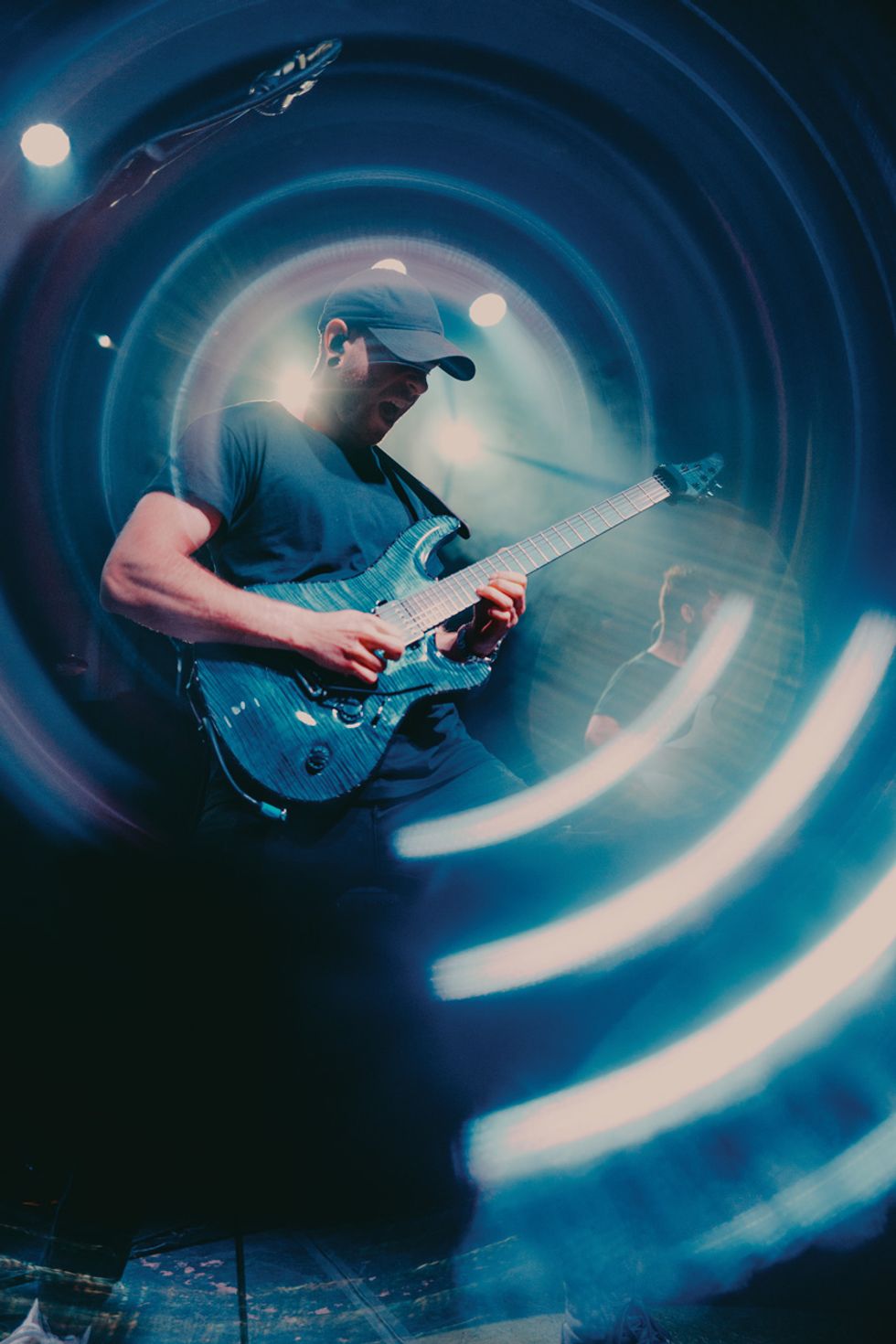





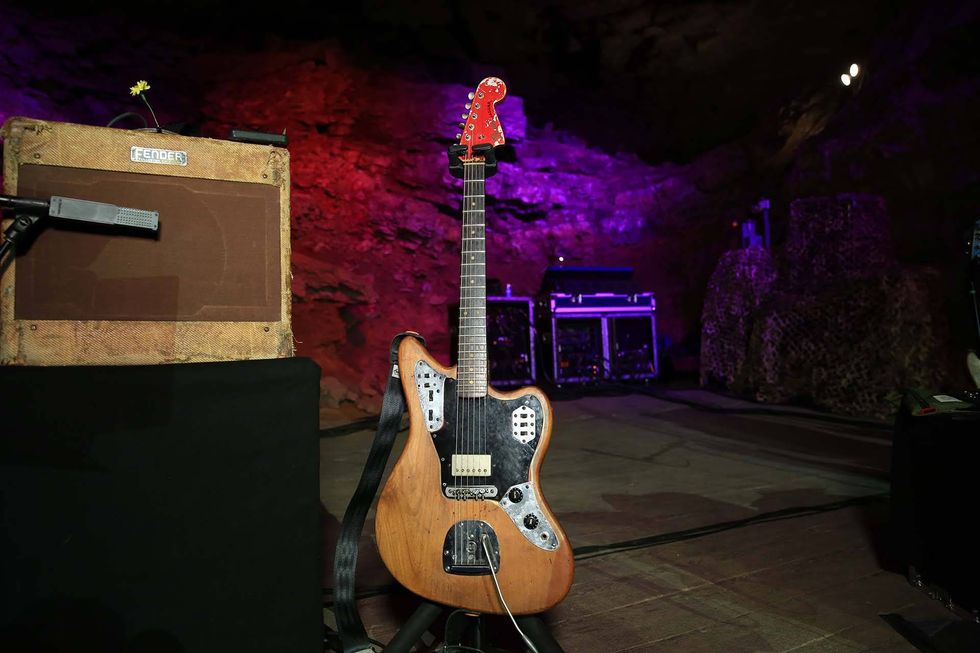
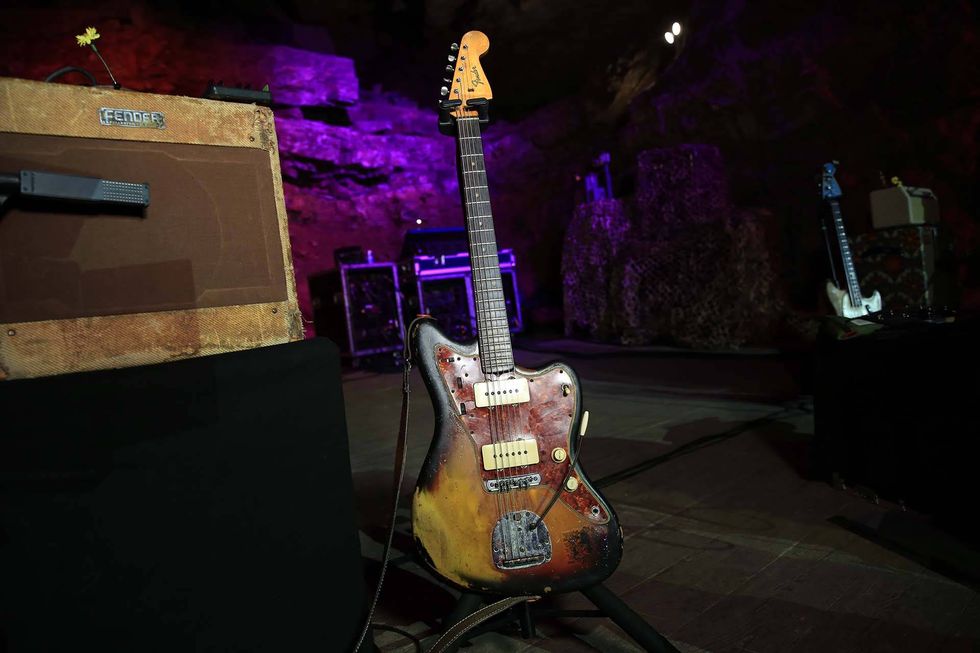
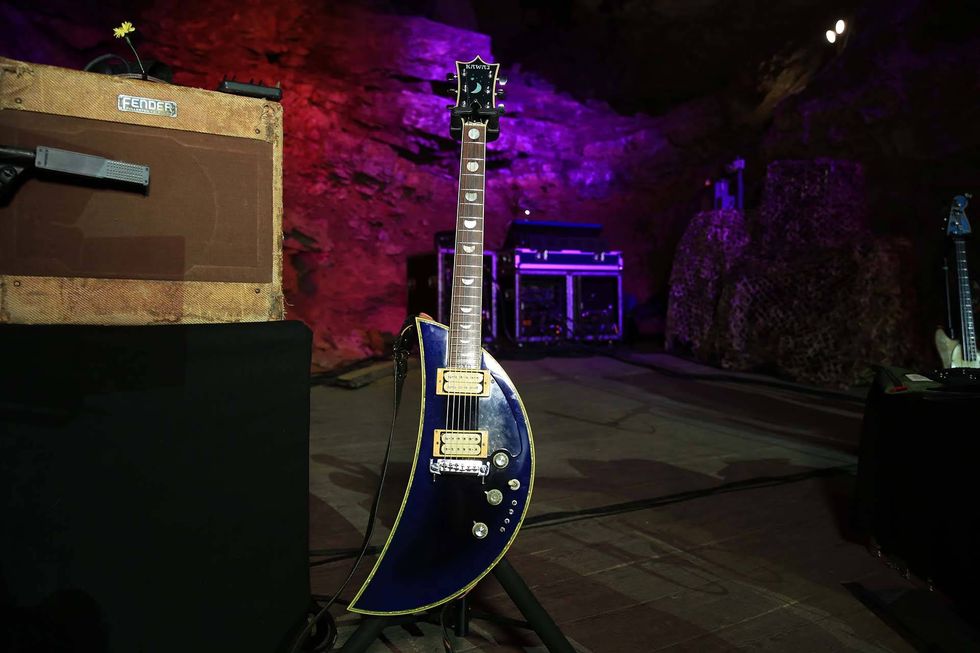
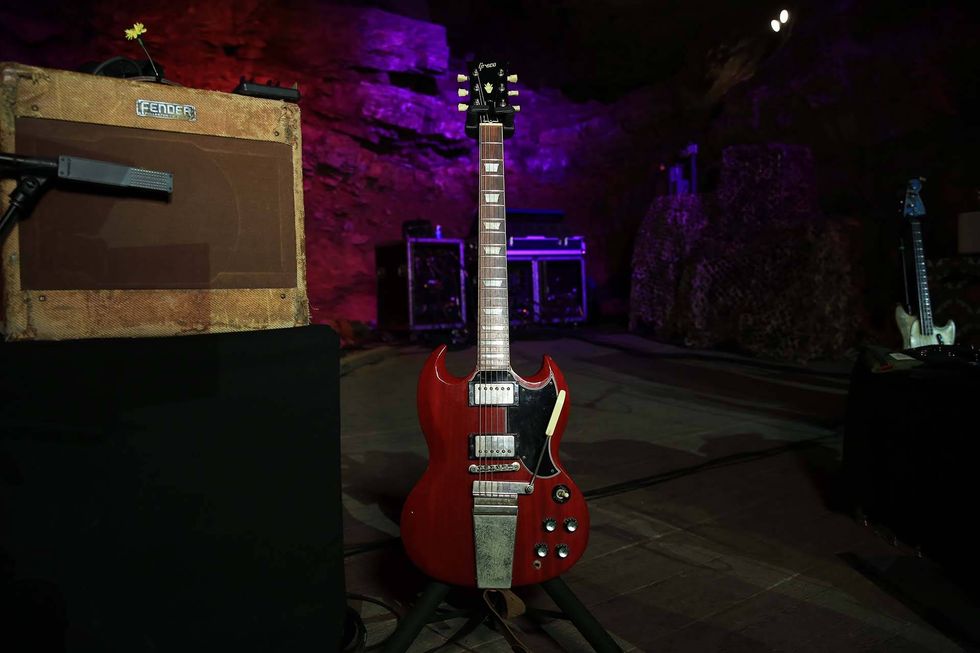
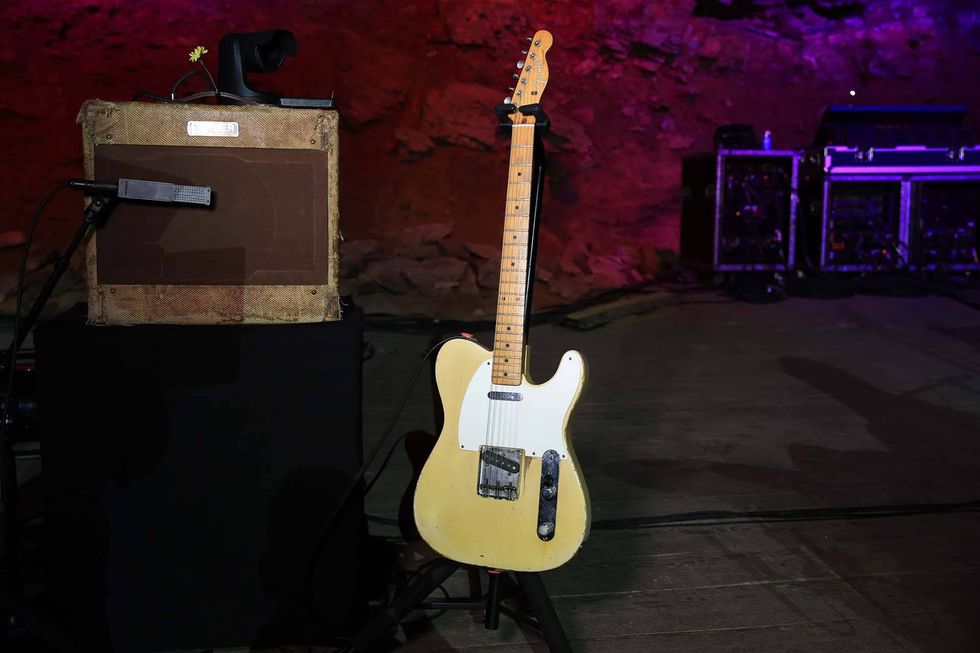
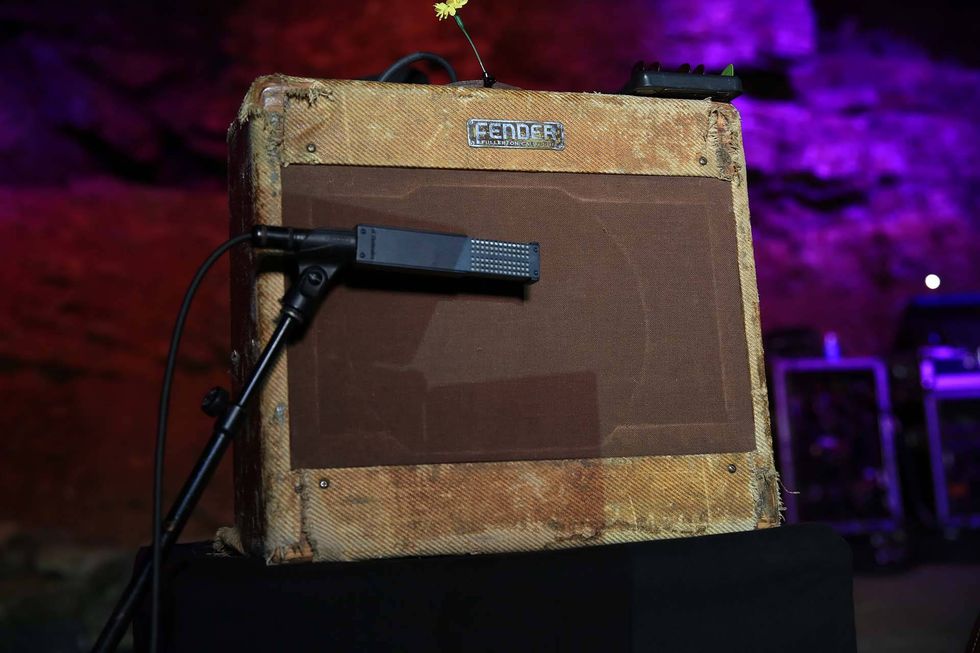
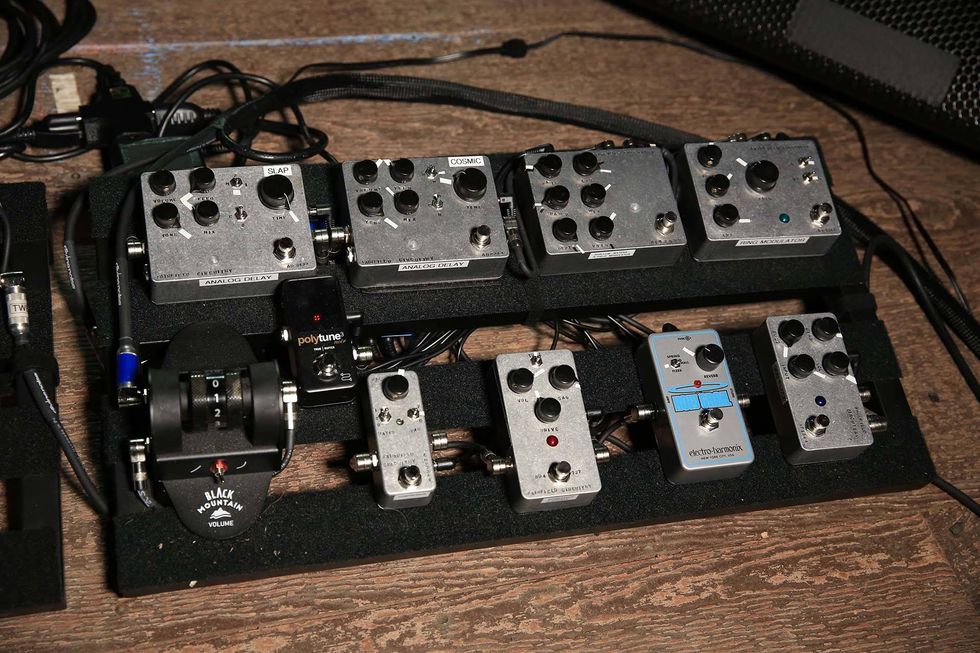
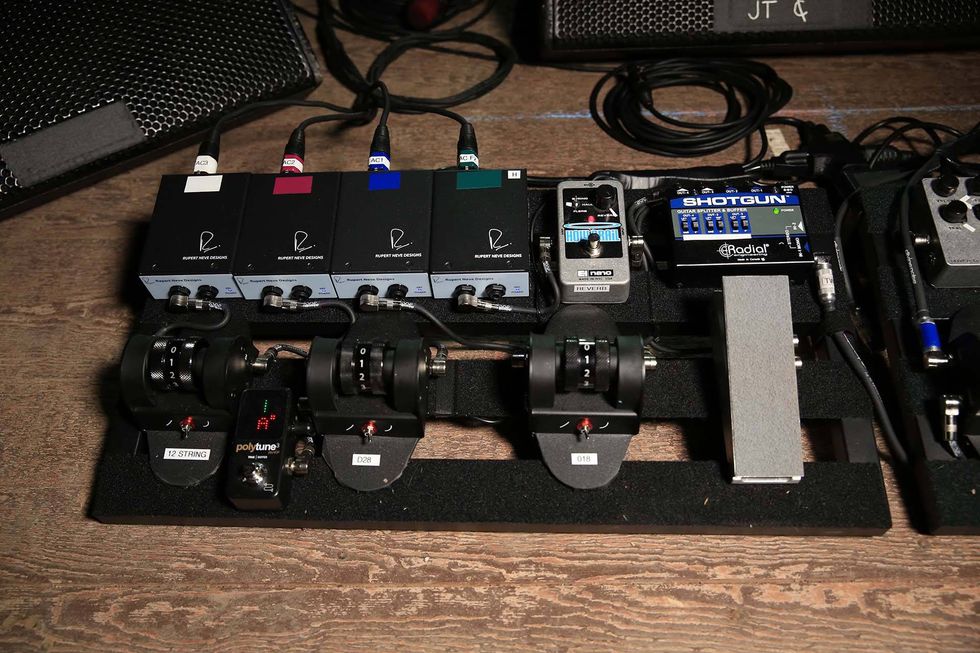



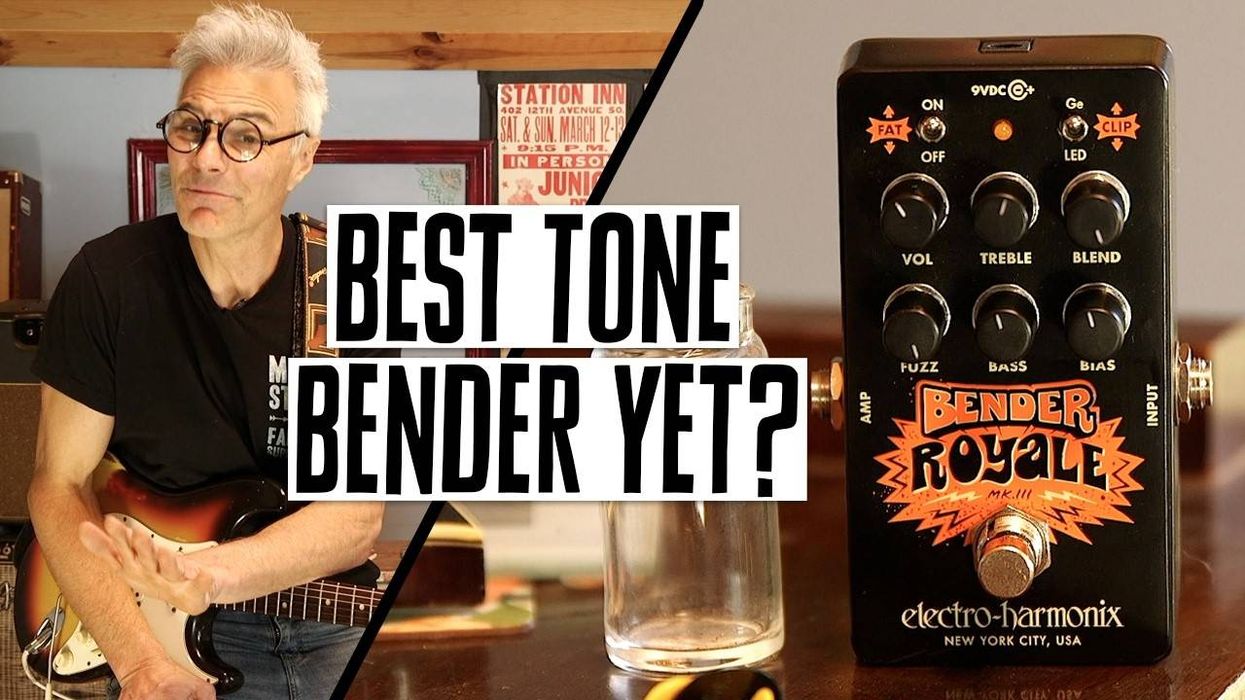

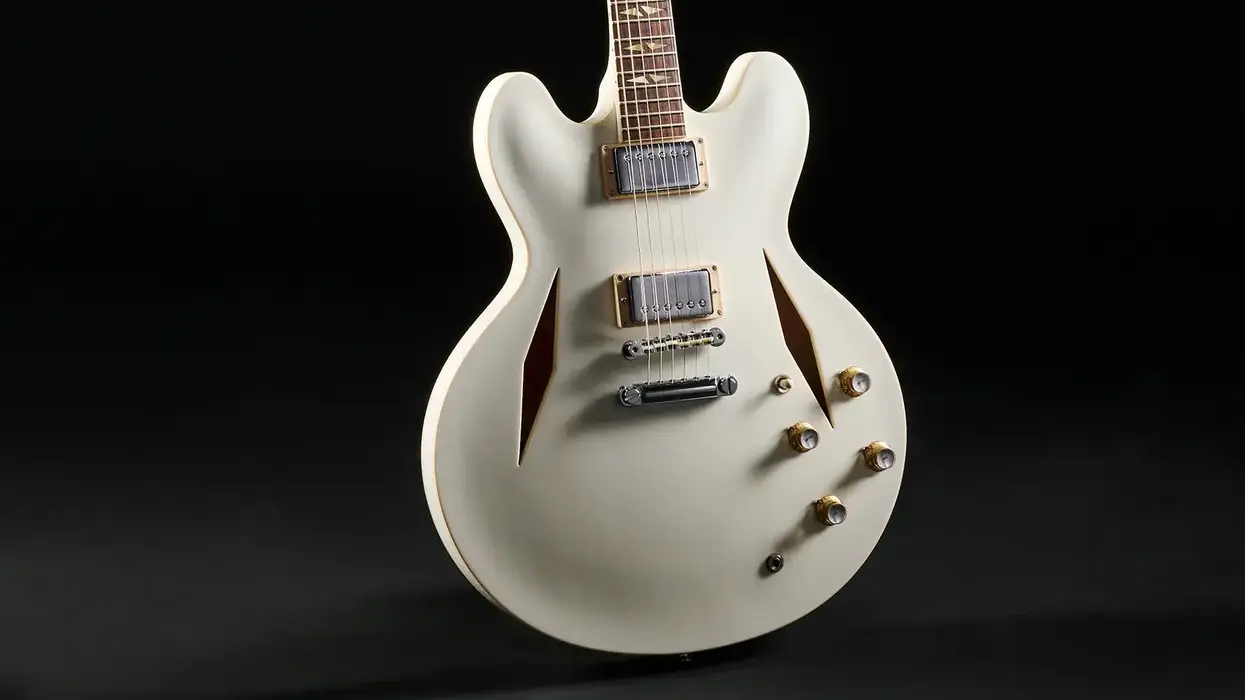
![Rig Rundown: AFI [2025]](https://www.premierguitar.com/media-library/youtube.jpg?id=62064741&width=1245&height=700&quality=70&coordinates=0%2C0%2C0%2C0)








 Zach loves his Sovtek Mig 60 head, which he plays through a cab he built himself at a pipe-organ shop in Denver. Every glue joint is lined with thin leather for maximum air tightness, and it’s stocked with Celestion G12M Greenback speakers.
Zach loves his Sovtek Mig 60 head, which he plays through a cab he built himself at a pipe-organ shop in Denver. Every glue joint is lined with thin leather for maximum air tightness, and it’s stocked with Celestion G12M Greenback speakers.












![Devon Eisenbarger [Katy Perry] Rig Rundown](https://www.premierguitar.com/media-library/youtube.jpg?id=61774583&width=1245&height=700&quality=70&coordinates=0%2C0%2C0%2C0)






